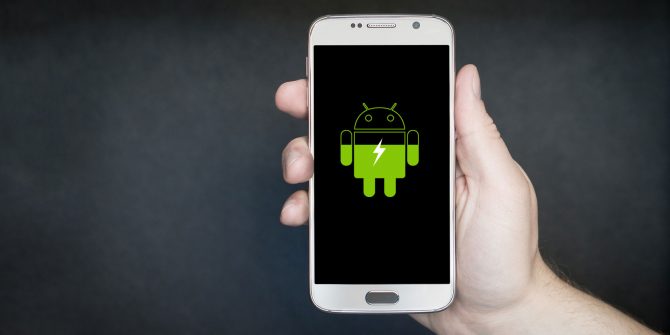The mobile phones of the old day all had those heavy battery packs that allowed the phones with longer battery time but made the phones bulky and hard to carry around your pockets. Over the course of a decade, the engineers and designers came up with features like sleek and lightweight designs along with interchangeable batteries. The thing about these interchangeable batteries is that they are not only slim in width but also very light in weight.

While now the batteries are now getting more and more powerful, there is also an increase in the functioning of the smartphones. So despite the being new strides made in power technology, an ordinary smartphone can still run out of power at the end of a busy day. This case is also true especially if the smartphone you are suing is an old one for about 2 years or more.

There are various ways to solve that problem one of which is to replace your old phone or if the budget is limited; to replace the old battery.

Or better yet, we provide some ways on how to save battery life on an Android phone.
How the Doze Mode works:
The first one is the Doze Mode which was first introduced in the Android version 6.0 which was added to ensure that certain apps in the mobile are not consuming battery when a person is not using the smartphone. For that mode to activate, a person does not need to do anything. As soon as the mobile lies motionless for a certain period of time, the Doze Mode kicks in automatically. Certain apps and their processing halts expect for the times when these apps need the access to an internet network for their syncing and updating.
In plain words, until a person uses their phone, their mobile and its apps take a little nap.
Now you do not want any app that needs constant updating and is crucial to your work from experiencing the Doze Mode. In such a case, you can disable the Doze Mode on a certain app in the following way.
- Go to ‘Settings’ of phone
- Go to ‘Apps & Notifications’
- Scroll to select ‘Advanced’
- Select ‘Special app access’
- Select ‘Battery optimization’

- There, user will see a list of apps that are not for Doze Mode optimization tap the button that says, “Not optimized” located on top and select ‘All Apps’

- Most apps will now be labeled as “Optimizing battery use”

- Go down this list and exempt the app by clicking on the app and selecting option ‘Don’t optimize’

Enabling the Adaptive Battery and Adaptive Brightness
There are two following battery-saving features that makes use of the mobile’s AI to learn to use the apps and the screen.
- Adaptive Battery
- Adaptive Brightness
User can adjust these tow battery features as per their needs. The idea behind this feature is that the apps and the display of the mobile will only draw power when they need it. Both these features are turned on ‘By Default’ but to make sure they are enabled is a good thing.
Turning On Adaptive Battery:-

- Go to ‘Settings’ of phone
- Select ‘Battery’
- Search and tap on option ‘Adaptive Battery’
- Enable if the option is not already enabled
Turning On Adaptive Brightness:-

- Go to ‘Settings’ of phone
- Select ‘Display’
- Search and tap on option ‘Adaptive Battery’
- Enable if the option is not already enabled
Using an app:
Play Store also has numerous apps with the promise to provide Battery Saving feature for your smartphone and quite a few of them actually work as advertised. Two of the well known apps among them are as follows.
- AccuBattery
- Greenify
AccuBattery:-

AccuBattery works by measuring the battery usage over time and then looks for any battery degradation. It lets the user know when the battery is full or also allows the user to set the battery to be charged a little less than 100% all the while increasing the battery degradation. Last but not least, the app lets the user knows as to how much time remains for the battery depending on the usage of the person.
Greenify:-

Greenify forcefully allows the apps to hibernate and save the battery form unnecessary drainage.
Turning off the unnecessary apps or uninstalling them:
When it comes to hibernating it is best to do a periodic check on all of your mobile apps that are causing the unnecessary battery drainage.
The first step is to go through all the apps and if there are some apps you do not use very often, it is best to get rid of them by uninstalling.
It is also a good thing to be aware of the fact as to which apps are using most battery power and you can do the check by doing the following steps.
- Go to ‘Settings’
- Go to ‘battery’
- Tap on ‘More’
- Tap on ‘Battery Usage’ which will tell the user exact battery power that is being used the most by any app
If a certain app is using too much power, you can restrict their background functioning by performing the following steps.
- From the ‘battery Usage’ section tap on the app that you need to restrict background operation

- Look for the option ‘background restriction’ and click it
- User will receive the warning that says, “App may not work properly if it can’t work in the background”. Still, click on ‘Restrict’ and stop the app form background operations.

Using Battery Saver:

Battery Saver is an option that kicks in automatically but you can enable a certain Low battery limit at which the Battery Saver will kick in. you can do it by performing the following steps.
- Go to ‘Settings’
- Go to ‘battery’
- Go to ‘battery Saver’
- Make sure the option saying ‘Turn On Automatically’ is on
- Determine the battery percentage at which point user wants the battery saver to start

User can also enable the battery saver mode manually there is a Battery Saver icon located in the drop-down menu’s Quick Settings.

If a user cannot see the icon, then click on the ‘Edit Pencil” located on the top and click it. This will provide the user with all the icons they can add in their Quick Settings menu. Simply tap the battery saver icon form there and it will be added in the drop-down menu.
Related content
How to guide on making text reading easier on the web, Android, and iOS






Comments
Loading…